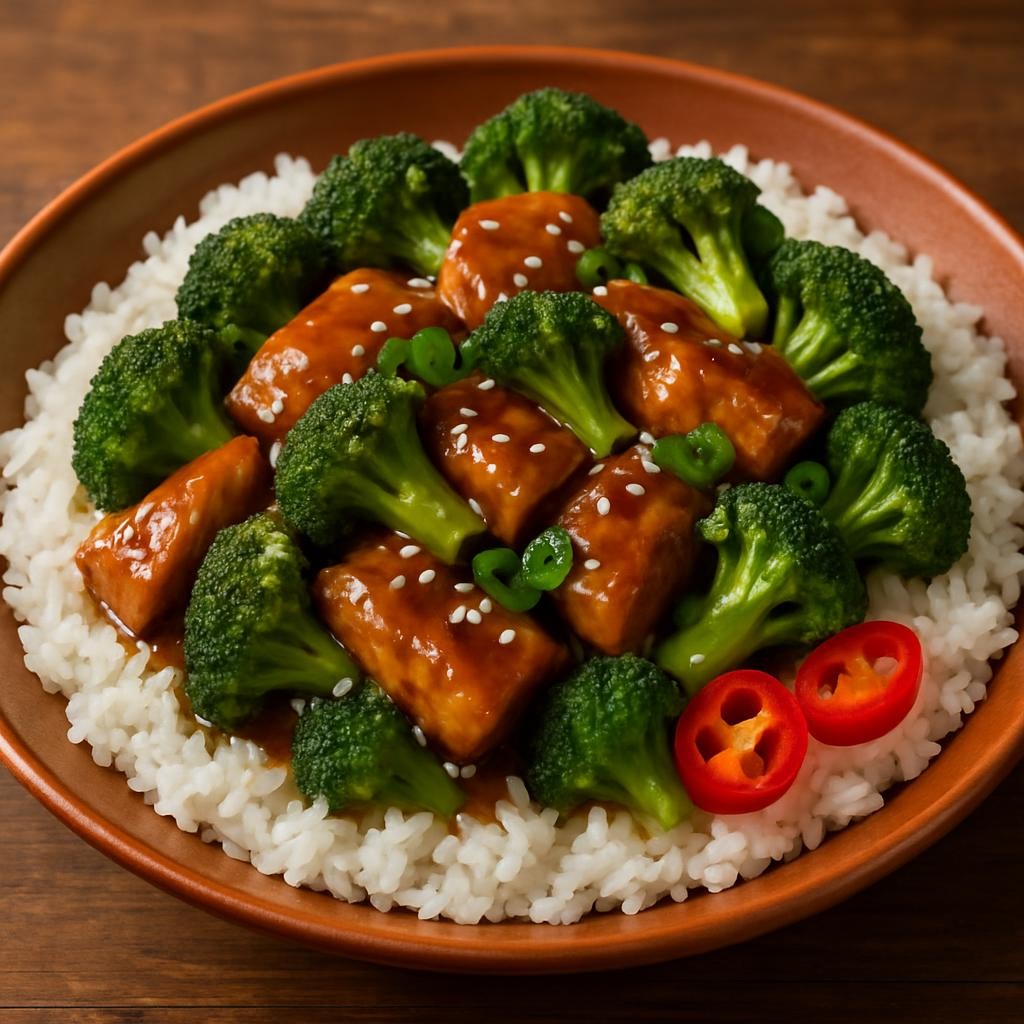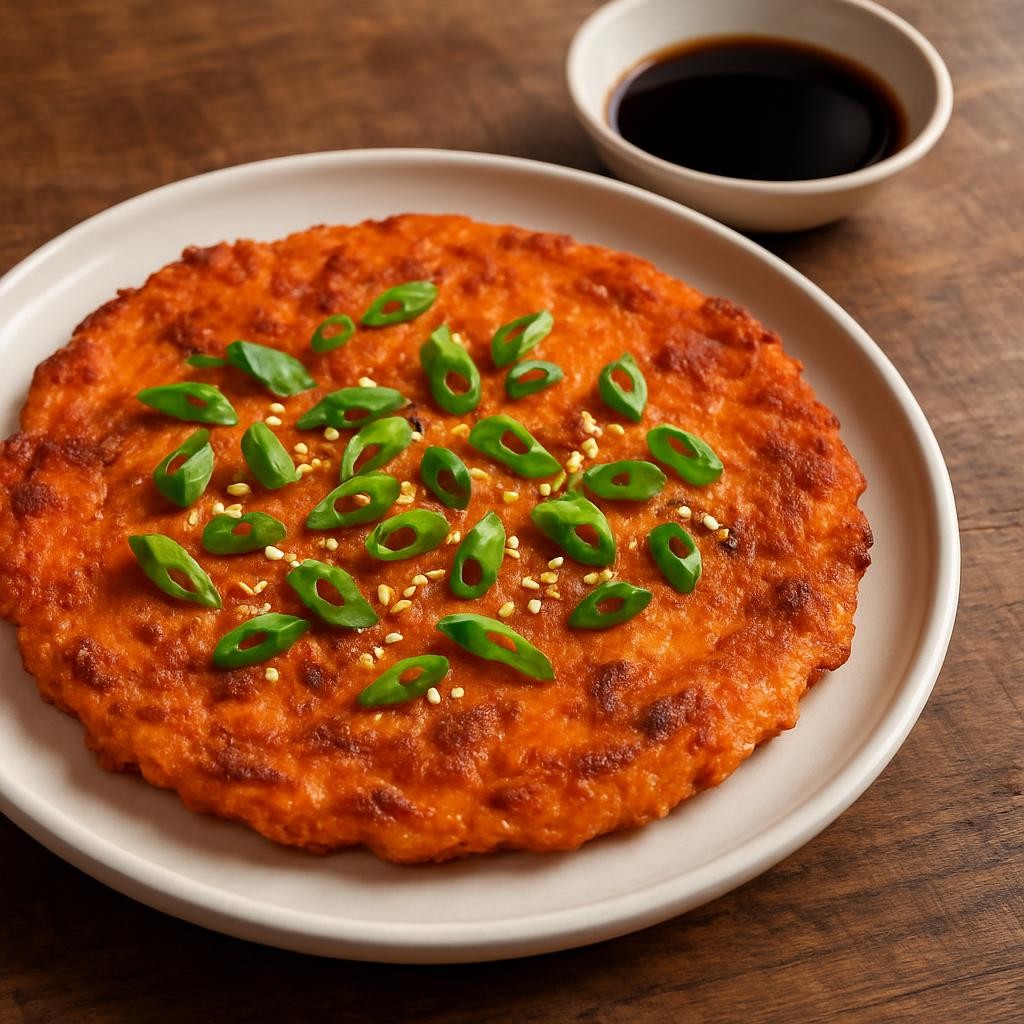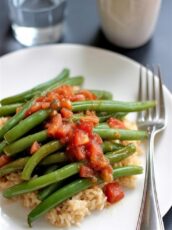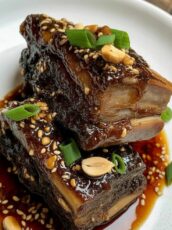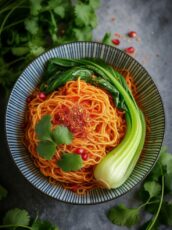Bibimbap, a traditional Korean dish, translates to “mixed rice,” and is a vibrant, colorful bowl brimming with fresh vegetables, protein, and a delightful kick of gochujang (Korean chili paste). It is not only visually appealing but also a harmonious blend of flavors and textures, making it an irresistible meal for any occasion. The beauty of bibimbap lies in its customization; you can easily tailor it to your taste preferences and dietary needs while enjoying a nutrient-packed dish that’s as delicious as it is wholesome.
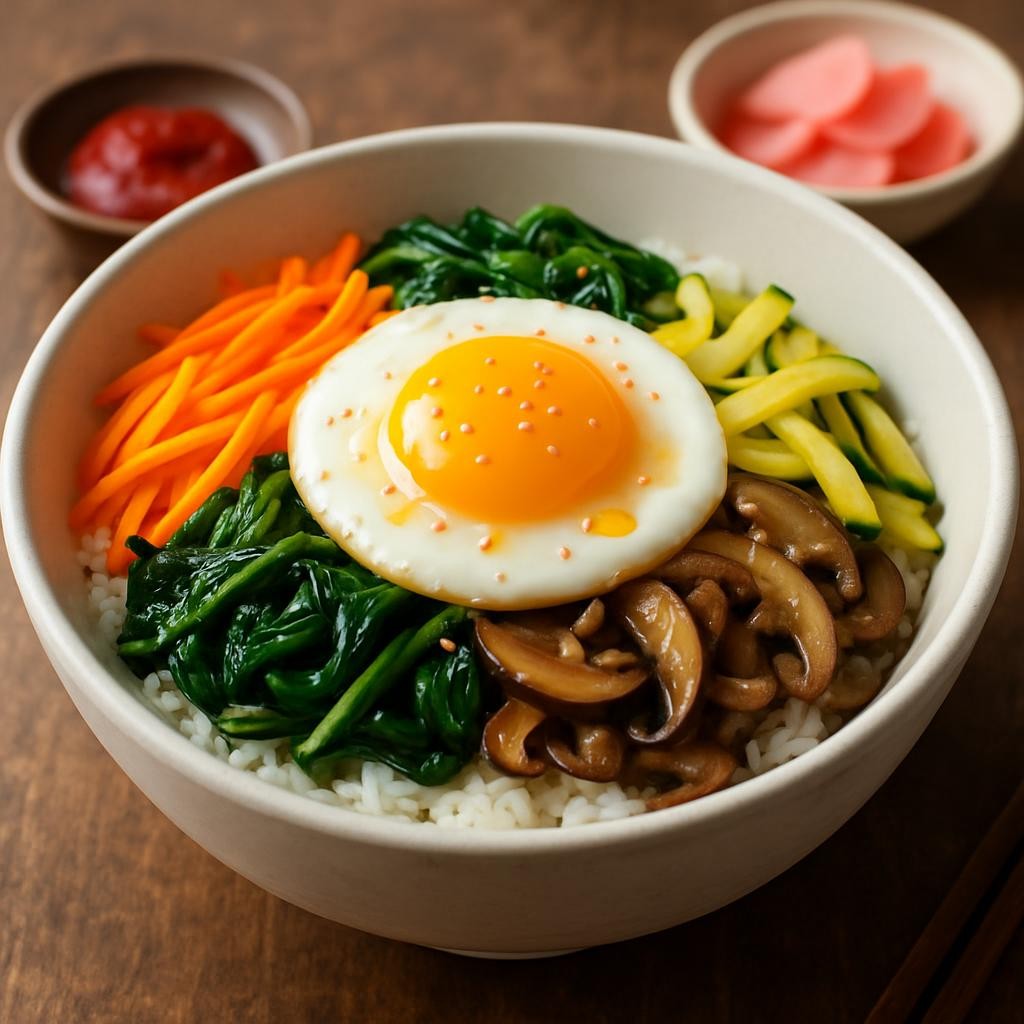
Why You Will Love This Recipe
This bibimbap recipe will quickly become a favorite for several reasons. First, it is highly versatile. Whether you’re a meat lover or a vegetarian, you can adapt the ingredients to suit your lifestyle. Second, it embodies the essence of Korean cuisine, which emphasizes balance and variety, providing an explosion of textures and flavors in every bite.
My love for bibimbap began when I visited a quaint Korean restaurant in my neighborhood. The moment I took my first bite of the beautiful bowl filled with colorful veggies, aromatic sesame oil, and spicy gochujang, I was hooked. It’s a dish that brings people together—everyone can customize their bowl while enjoying the communal experience of mixing everything together. This recipe captures that same spirit, making it easy to recreate this beloved dish at home.
Tips and Tricks
1. Rice Selection: Use short-grain rice to achieve the perfect sticky texture that holds everything together.
2. Prepping Veggies: Slice your vegetables thinly for quicker cooking and a more appealing presentation.
3. Marinate for Flavor: Allow the vegetables, particularly the mushrooms and protein, to marinate in soy sauce, garlic, and sesame oil for at least 30 minutes before cooking to enhance their flavors.
4. Temperature Matters: Serve the bibimbap hot. This allows the gochujang to meld beautifully with the warm rice and vegetables.
5. Fried Egg: For the perfect runny yolk, fry your egg just before serving to ensure it stays warm and gooey.
Make Ahead Tips
You can prep many components of bibimbap in advance, making it an ideal candidate for meal prep:
- Rice: Cook and refrigerate rice up to 3 days in advance.
- Vegetables: Pre-slice and store veggies in airtight containers for up to 3 days.
- Marinated Protein: Marinate your choice of protein the night before and store it in the fridge.
- Sauce: Prepare the gochujang sauce ahead of time; it can be stored in the refrigerator for up to a week.
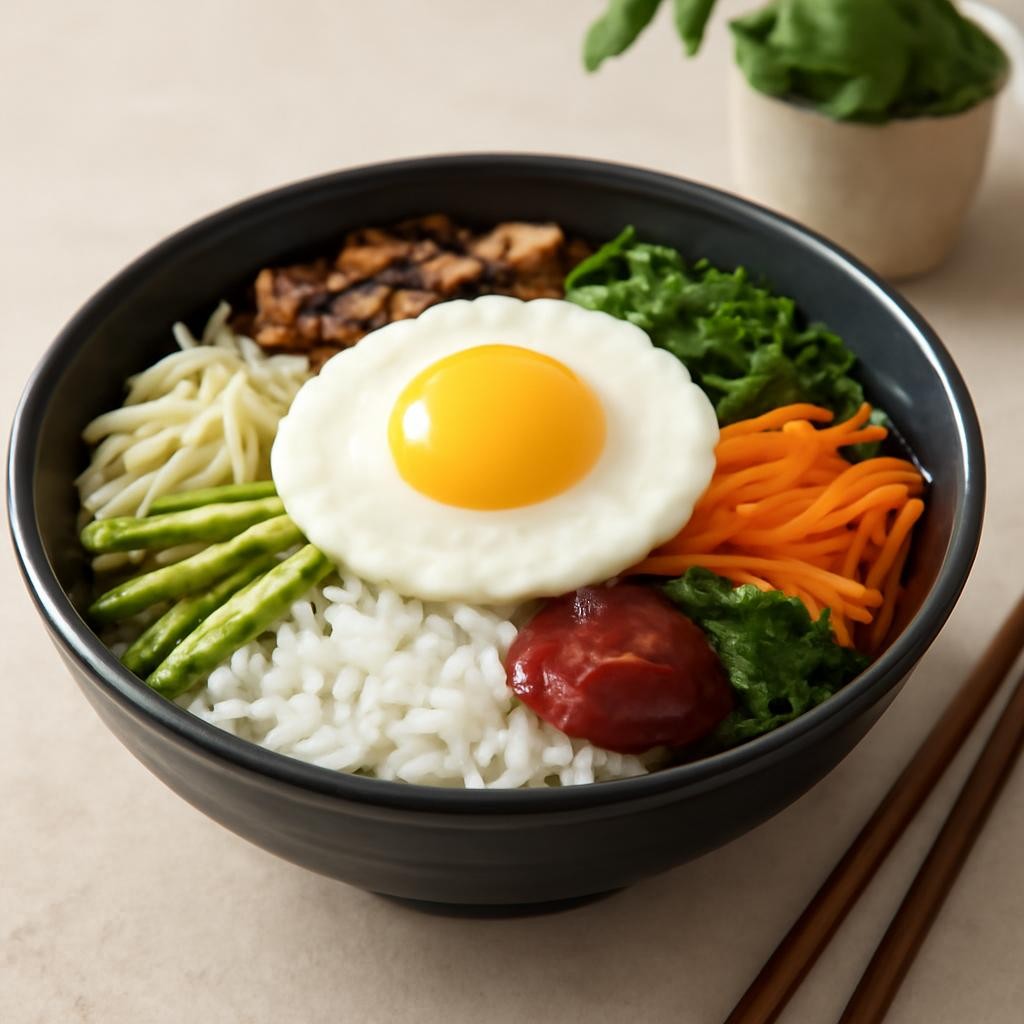
Recipe Variations
- Protein Swaps: Substitute beef with chicken, tofu, or tempeh for a vegetarian option.
- Seasoning Changes: Experiment with different sauces like sriracha or a homemade spicy sesame dressing.
- Cooking Methods: Try roasting your veggies instead of sautéing for a deeper flavor.
How to Serve
To serve bibimbap, place a generous scoop of warm rice at the bottom of a bowl. Arrange the cooked vegetables and protein on top, creating a colorful presentation. Serve with a fried egg on top, and drizzle with sesame oil and sprinkle sesame seeds for garnish. A side of kimchi adds an authentic touch, while a spoonful of gochujang can be placed on the side for those who love extra heat.
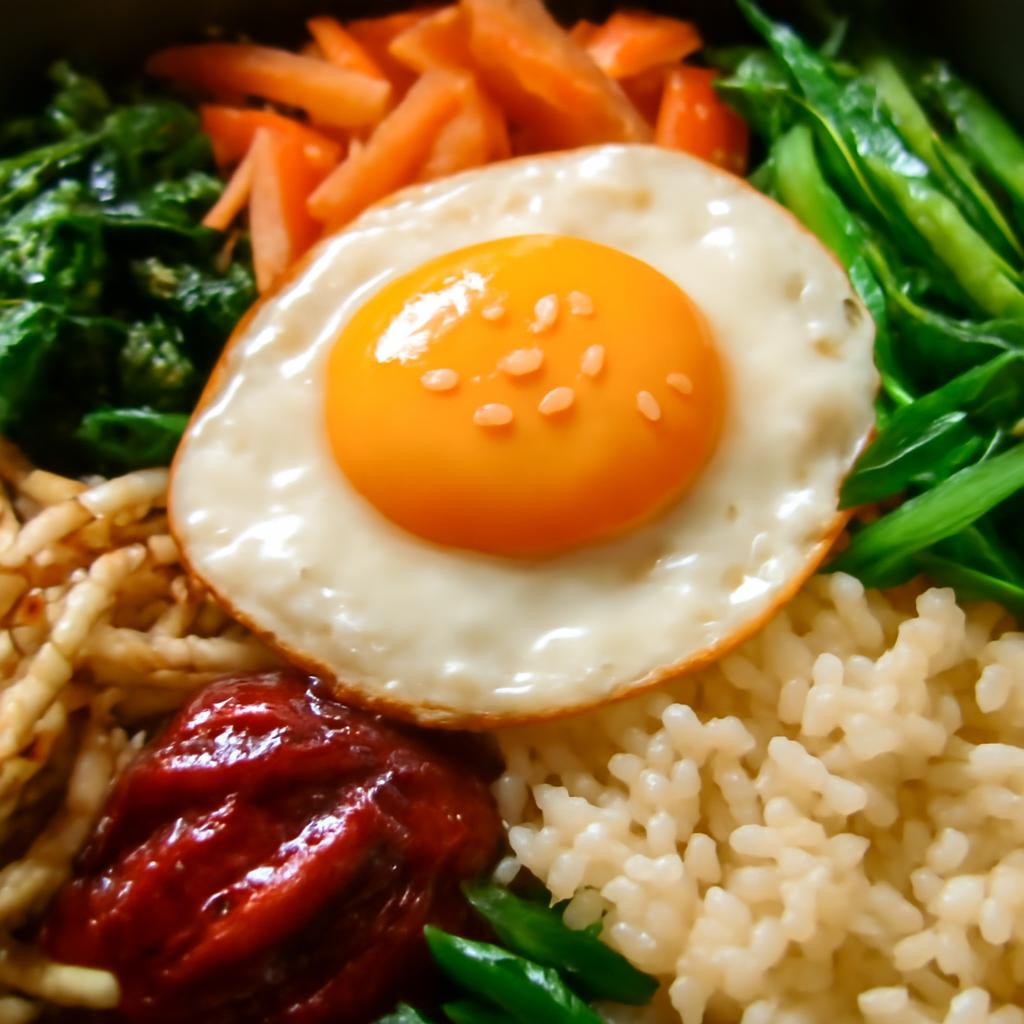
Pairing Suggestions
Pair your bibimbap with a refreshing Korean beverage like Sikhye (sweet rice drink) or a light beer. For a more sophisticated pairing, a dry Riesling or a fruity Soju can complement the spicy flavors beautifully. As for sides, consider serving it with crisp pickled radishes or a light cucumber salad.
How to Store
Leftovers can be stored in an airtight container in the refrigerator for up to 3 days. To reheat, warm the rice and vegetables together in a skillet over medium heat or in the microwave. If you’ve stored the fried egg separately, add it just before serving to keep it fresh.
Equipment Needed
- A rice cooker or pot for cooking rice.
- A large skillet or wok for sautéing vegetables and protein.
- A frying pan for the egg.
- Knives and cutting boards for chopping ingredients.
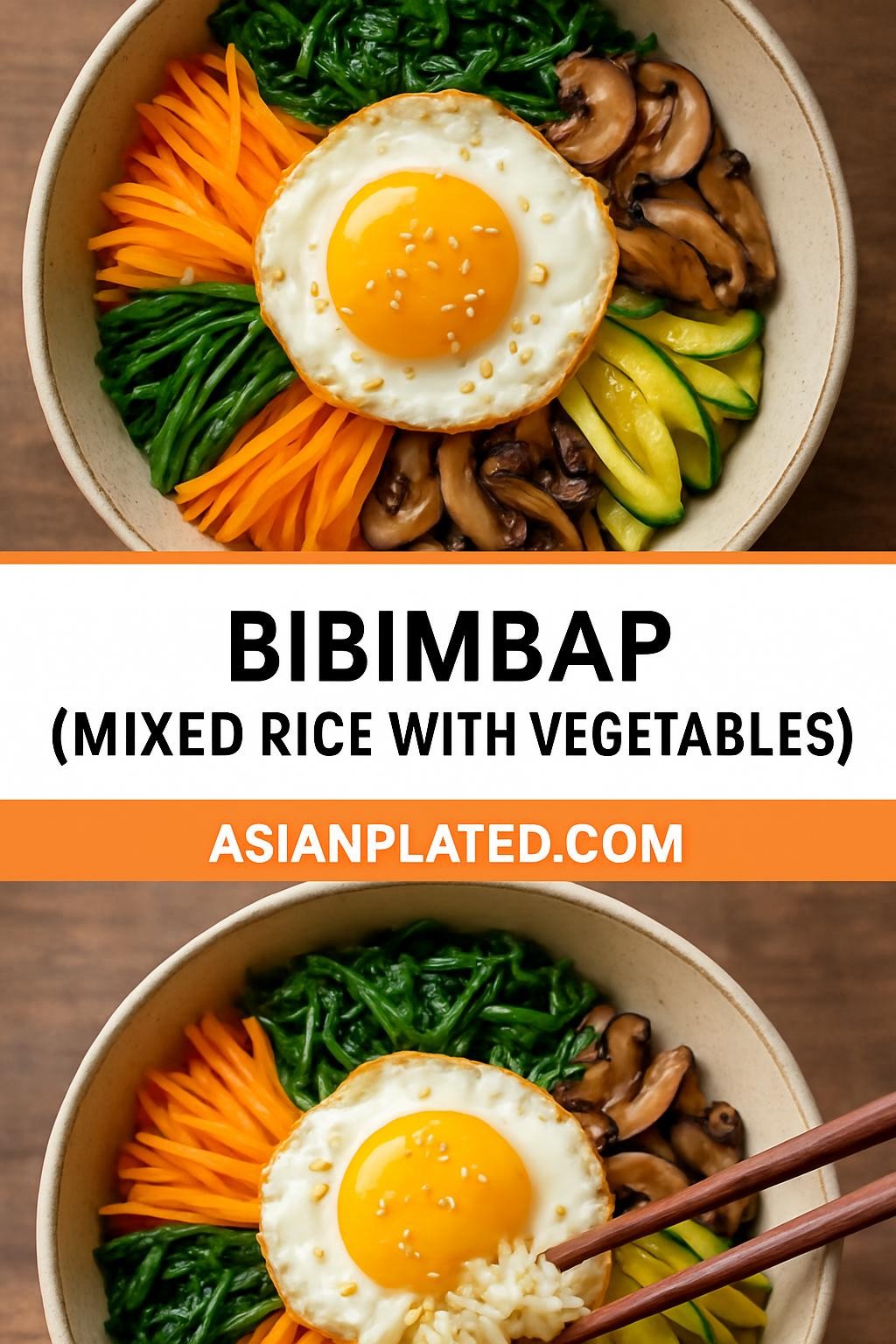
Dietary Adaptations
- Vegan: Omit the egg and use tofu or tempeh for protein.
- Gluten-Free: Ensure that the gochujang and soy sauce are gluten-free.
- Nut-Free: Substitute sesame oil with olive oil or omit it entirely if allergic.
Seasonal Adaptations
In spring and summer, use fresh, seasonal vegetables like zucchini, asparagus, and radishes. In fall and winter, opt for heartier vegetables such as carrots, sweet potatoes, and root vegetables.
Recipe FAQs
1. Can I use brown rice instead of white rice? Yes, but it will alter the cooking time, and the texture will be different.
2. What can I substitute for gochujang? You can use sriracha or a mix of chili paste and miso if gochujang is unavailable.
3. How do I avoid mushy rice? Make sure to rinse your rice thoroughly before cooking to remove excess starch.
Bibimbap
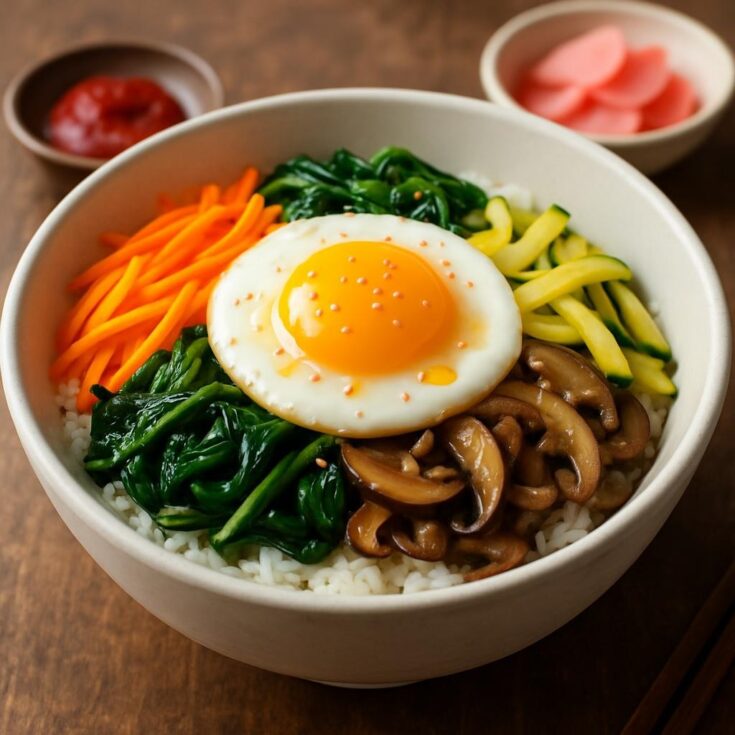
Bibimbap, a traditional Korean dish, translates to “mixed rice,” and is a vibrant, colorful bowl brimming with fresh vegetables, protein, and a delightful kick of gochujang (Korean chili paste).
Ingredients
- 2 cups short-grain rice
- 1 cup spinach, blanched
- 1 cup carrots, julienned
- 1 cup zucchini, julienned
- 1 cup mushrooms, sliced
- 1 cup bean sprouts
- 1 cup beef (or tofu), sliced thinly
- 2 eggs
- 2 tablespoons gochujang
- 2 tablespoons sesame oil
- 1 tablespoon soy sauce
- 1 tablespoon sesame seeds
- Salt and pepper to taste
Instructions
- Cook the Rice: Rinse the short-grain rice under cold water until the water runs clear. Cook according to your rice cooker's instructions or in a pot with 2 cups of water.
- Prep the Protein: Marinate the beef or tofu in a mix of soy sauce, minced garlic, and sesame oil for at least 30 minutes.
- Sauté the Vegetables: In a skillet, heat a tablespoon of sesame oil over medium heat. Sauté each vegetable separately, seasoning with salt and pepper, until tender but still crisp. Set aside.
- Cook the Protein: In the same skillet, cook the marinated beef or tofu until browned and cooked through.
- Fry the Eggs: In a separate frying pan, fry the eggs sunny-side up until the whites are set but the yolks remain runny.
- Assemble the Bibimbap: In bowls, place a scoop of rice at the bottom. Arrange the sautéed vegetables and protein on top in segments. Place a fried egg in the center, drizzle with sesame oil, and sprinkle sesame seeds.
- Serve: Serve immediately with gochujang on the side for added spice.
Nutrition Information:
Yield: 4 Serving Size: 1Amount Per Serving: Calories: 436Total Fat: 20gSaturated Fat: 6gTrans Fat: 0gUnsaturated Fat: 13gCholesterol: 142mgSodium: 865mgCarbohydrates: 40gFiber: 5gSugar: 9gProtein: 25g
Asianplated.com, occasionally offers nutritional information for recipes contained on this site. This information is provided as a courtesy and is an estimate only. This information comes from online calculators. Although allchickenrecipes.com attempts to provide accurate nutritional information, these figures are only estimates.
Final Thoughts
Bibimbap is more than just a meal; it’s an experience that brings together a variety of flavors, colors, and textures. Whether you’re enjoying it on a quiet night at home or sharing it with friends and family, this dish is sure to impress. I hope this recipe inspires you to explore the wonderful world of Korean cuisine and to create your own beautiful, delicious bibimbap at home. Happy cooking!

